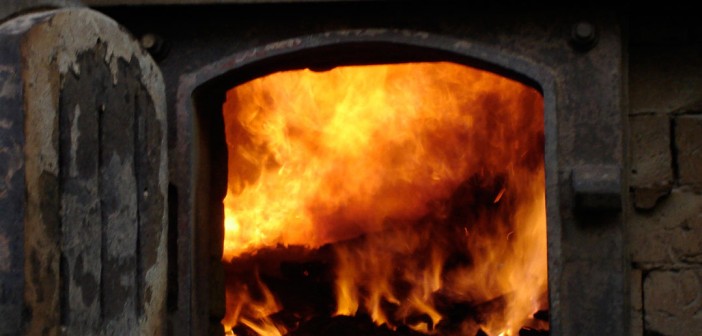Whether you’re stepping into your new home for the first time or you want to further invest in your household of many years, the decision to purchase a new furnace could very well be right around the corner. There are many reasons why someone might seriously consider a furnace replacement: breakdowns, repair bills, age, and finances to name a few. But whatever the reasons might be, pursuing a new furnace is a serious and important jump that needs careful consideration. By following this guide, you’ll learn the need-to-know basics of furnace replacement.
The Three Heating Systems
It’s important to first know the specific type of heating system your home relies on. There are three kinds that are provided from the use of no. 2 fuel oil: hot air, steam, and hot water.
A hot air system heats oxygen in a furnace and then circulates it through a system of pipes, eventually blowing it through vents, which provides warmth throughout a house. These systems are becoming less and less common, but older homes use them in conjunction with humidifiers to add moisture to the dry air produced as heat.
A steam system works a lot like a hot air system, but in this case water is heated and evaporated by a boiler. Once the water is evaporated, the heated steam will rise through piping and fill the home’s radiators, providing warmth. Steam, though more common than hot air systems, is still a relatively old heating method and is found in some older homes.
The hot water system is the most contemporary trend of oil heating in newly built houses; it’s also reported to be the most comfortable. Instead of being turned into steam, water is simply heated to high temperatures by a boiler and circulated through piping into radiators throughout a house, eventually returning to the boiler. One advantage of hot water systems is the ability to heat different areas of a home at different temperatures, which is called “zoning.”
Finding The Right Replacement
When you’re sure of the system type that heats your house, that’s what you should stick with. A shift from one system to another can only be accomplished through major renovations and costs, as a home would have to be gutted in order to install all of the proper equipment for a new system type. If renovations are on the agenda, it would be a wise consideration to replace a hot air system for hot water, for example. But if you’re only looking to replace an old furnace or boiler, stick with the system type you’ve been using all along.
Because there are several brands on the market for boilers and furnaces, one piece of data that is important to know when considering a replacement is the annual fuel utilization efficiency (AFUE). The AFUE indicates the percentage of fuel oil that is successfully converted into actual heat for a home. The higher the AFUE percentage is, the better the conversion rate from oil to heat. For example, an AFUE of 85 percent means that 85 percent of fuel is being successfully used to heat a home, while the remaining 15 percent is lost, such as exhaust.
Another concern that might spring to mind is finding the right replacement for the right size home. The standard measurement used in determining the heating power of a furnace or boiler is the British Thermal Unit (BTU). The BTU indicates the amount of heat needed to raise one pound of water one degree Fahrenheit. The higher the BTU rating is on a furnace or boiler, the greater the device’s heating power. A standard household might only need 50,000 BTUs, while larger homes might require almost 150,000 BTUs. A safe average is usually around 85,000 BTUs.
Though there are many different brands on the market for boilers and furnaces, here are some reputable names to consider when searching for a replacement:
Boilers:
Weil-McClain has been in business since 1881. Headquartered in Michigan City, Indiana, Weil-McLain offer boilers for both hot water and steam systems; their AFUE ratings average around 86 percent.
Burnham Hydronics is a product line of Burnham Holdings, Inc., which provides a full range of heating equipment. Burnham Hydronics specifically provides both steam and hot water boilers. Their newer models have an AFUE rating of about 86 to 87 percent, while the ratings of their older models float around 80 percent.
Peerless has a strong reputation for providing a solid variety of both steam and hot water boilers. The AFUE ratings of Peerless products average around 87 percent; one model, the Peerless Pinnacle, reaches all the way to 93 percent.
Utica Boilers is a product line owned by ECR International, which has been around since 1928. Utica offers a selection of hot water and steam boilers with AFUE ratings averaging around 85 to 86 percent.
New Yorker is a subsidiary of Burnham Holdings, Inc., and is based in Hatfield, Pennsylvania. New Yorker’s steam and hot water boilers have a much wider AUFE average, ranging from about 82 to 87 percent.
Buderus has a company history of almost 275 years, having started in Germany. Headquartered in Londonderry, New Hampshire, Buderus provides quality boilers with some of the highest AFUE ratings, most of them over 86 percent.
Furnaces:
Thermo Pride is also owned by Burnham Holdings, Inc., and has been in business for over 50 years. Their furnaces are some of the most dependable systems, with AFUE ratings averaging in the low 80s.
Lennox has a company history that dates all the way back to 1895, and is still making hot air systems for today’s homes. Their furnaces average an AFUE rating around 83 percent.
Rheem is another brand worth looking into. They’ve been in business since the 1920s and carry furnaces with AFUE percentages around 80.
York was founded in 1874 in York, Pennsylvania, and have expanded worldwide ever since. Their furnaces have AFUE percentages in the low 80s.
Problems To Watch For
For homeowners questioning the age and functionality of their furnace or boiler, it’s difficult to pinpoint definite signs that a heating system is beyond the point of repair and needs to be replaced. Because both furnaces and boilers are complex systems, problems can range from minor glitches to serious issues. However, there are still some telltale signs to look out for when wondering if there’s a problem with your furnace or boiler. While these tips might reflect smaller mechanical uses, they might also indicate that its time for a complete replacement.
— If there are water leaks in or around your boiler, it could be an indication of the machinery’s age and that the equipment is wearing down.
— You should never smell fuel oil. If the odor of oil is detected at any time, it’s a problem that should be addressed immediately.
— Look for visible signs of rusting. While obvious, rust could be a telling sign that a furnace or boiler might warrant a replacement sooner than later.
— Frequent breakdowns are something else to consider, but this is a tip that needs some judgment. For instance, if a furnace or boiler is only a few years old but is continuously breaking down, chances are there’s a repairable problem and a replacement is not necessary. But if a system is pushing 15 years or more in age, it could very well be permanently wearing out.
Final Decisions
When the time arrives to replace a furnace or boiler, price will be a paramount factor. For a specific hot air furnace, expect a general price range of $4,000 to $4,500. A new boiler will probably cost between $4,500 and $5,200, but models with high AFUE ratings could push close to $8,000 dollars.
But the most important consideration for a homeowner looking to replace a furnace or boiler is to find a trustworthy full-service heating oil dealer. The Better Business Bureau and your state’s Department of Consumer Affairs are great sources for checking out dealership reliability after doing a little research on dealers in your area. By finding a reputable and dependable dealer, you’ll discover an establishment that has an invested interest in installing and repairing your furnace or boiler as well as providing your fuel oil. This kind of professional relationship is your best bet in figuring out the brand and model right for you, having it installed safely and securely, and having a steadfast source of assistance for any problems down the road.
This white paper was originally written for Heat USA.




